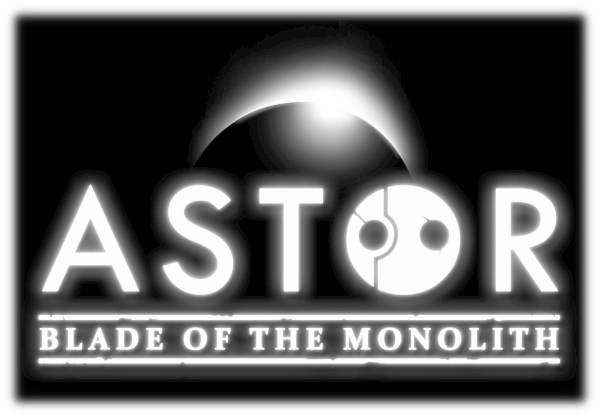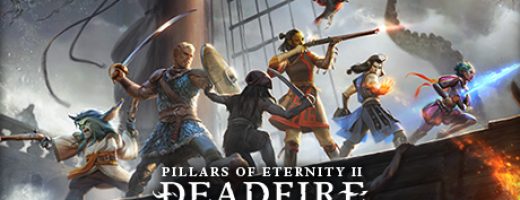Astor: Blade of the Monolith Review
A Dull Blade
A world destroyed by a plague. Humans have been wiped out for a millennia. Now, the only ones with sentient life left are short, puppet-like robots. But when a new enemy threatens the few communities they have left, a hero must rise to the challenge to save their world and, possibly, their souls.
This is the world of Astor: Blade of the Monolith. Diokek, the small puppet-like robots, are currently being plagued by the Hiltsik, a group of dangerous and aggressive masked creatures that appear and destroy their communities. While searching through an ancient tomb for information on the Hiltsik, Astor and his friend end up separated. In an underground temple Astor finds himself becoming “the Chosen”, a prophetic leader and savior of the Diokek people. After escaping together, the friends determine they must show off Astor’s powers to the local community and perhaps even use his strength to defeat and banish the Hiltsik threat.
Astor: Blade of the Monolith is a paint-by-numbers save-the-world plot. There are some semi-interesting lore dumps and bits of world-building, but most of the game’s narrative is backloaded into the last few of its dozen or so hours of gameplay. This means that for the majority of the game, there isn’t much story. Astor is a silent protagonist, and while other games allow the protagonist to show their personality through their actions, there isn’t much to glean from Astor’s behavior. Sometimes Astor gets mad, and sometimes he’s upset with things, but overall, he’s a pretty basic and limp character. The rest of the cast are also are also lacking much personality. They are generically nice, good, and well meaning, and there are no twists or betrayals to speak of. There are some time when the game does decide to become heavier, but as the characters have previously not shown any emotions less than happy, it lacks the necessary emotional build-up and falls a bit flat.
Combat attempts to be reminiscent of 3D spectacle fighters like God of War or Devil May Cry, but struggles to keep itself interesting. Astor has access to several weapons including a sword, a pair of fists, and a spear. Most of the weapons have a standard three-hit combo with extensions available for purchase at save points. The lock-on functionality lacks a tutorial and doesn’t work well when players do stumble upon it. There is a parry and block system; however it is buggy and rarely, if ever, gives the desired result. Sometimes Astor’s block doesn’t activate. Sometimes the game lags behind the players’ input. This combination makes using either a frustrating experience.
The issues with parrying and blocking won’t necessarily stop players as enemies are extremely easy on normal difficulty. On hard though, this will become a large issue. Foes have no special moves or abilities to keep the player on their toes, nor does fighting them require an active approach. Every weapon works in the same manner with very little reason for the player to switch or mix up their choices. Special moves, called Runic Powers, take all challenge out of combat. They all effectively act as forms of screen clearer, defeating groups of enemies in one or two hits, leading to combat being more of a boring chore than engaging.
Players are guided to their main objectives via a compass at the top of the screen. There are sidequests available from a few NPCs but they are very bare-bones. Oftentimes the NPCs will just send Astor to follow a random enemy, collect an item, or defeat a group of enemies. There aren’t any interesting or engaging storylines or rewards other than experience points and skill points.
The soundtrack is nice, but lacks any memorable moments or songs. The game has one main battle track, with a special track related to boss fights. Most locations, however, feel the same in both their audio and visual. Outside of NPCs having different models, there is nothing that separates the main town from the golem town or the snow village. The only voice acting in the game is the narrator who will sometimes flub a line or two and sounds wooden, rather than a storyteller able to engage the listener in the tale. Along with this, there are instances of the narrator’s words not matching the subtitles at all, which themselves include the occasional misspelling.
Performance, outside of bugs, is decent and the game can be easily played on older hardware. The build played for this review is buggy, with most showing up in the later stages. Astor fell through solid objects. The camera randomly shook during story moments. Multiple cutscenes froze or just outright wouldn’t play, while some cutscenes had missing dialogue, leading to awkward moments of the characters just waving back and forth at each other. There were also several late-game crashes, usually due memory leak.
Astor: Blade of the Monolith feels like a game that needed a few more months to cook. The gameplay is underdeveloped, there are multiple bugs, and and the plot really could’ve done with some punching up. While this adventure has potential for improvement, but it’s very difficult to find reasons to recommend it in its current state.
Disclosure: This review is based on a free copy of the game provided by the publisher.


A quick-paced, bite-sized adventure
Interesting narrative ideas
Great for on-the-go gaming
Multiple bugs ruin immersion
A forgettable soundtrack
Combat is too simple









Recent Comments